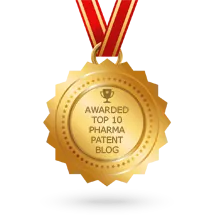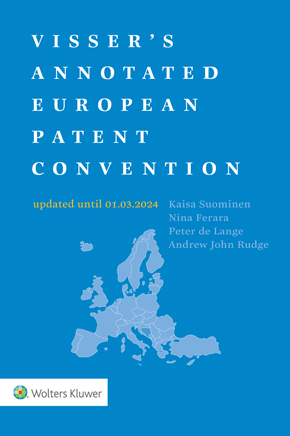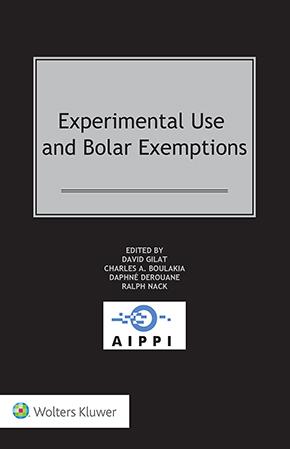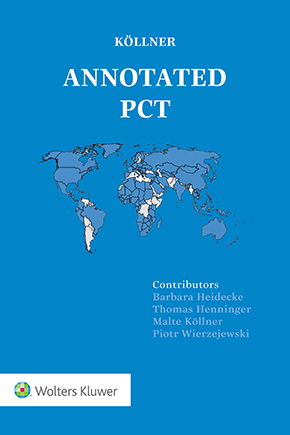Patent case: Ruling No. 76/2020 of Barcelona Commercial Court no. 4, Spain
August 26, 2020
Another chapter in the pemetrexed saga: Barcelona Commercial Court No. 4 has ruled on infringement in the very first case worldwide concerning pemetrexed diarginine, a salt form of pemetrexed chosen by Sandoz in the wake of the outcome of the landmark Actavis case of the Supreme Court of the United Kingdom (Judgment dated 12 July 2017). In preliminary injunction proceedings, the Spanish Court held that pemetrexed diarginine was also an infringing equivalent to pemetrexed disodium and, in doing so, makes some interesting findings.
Case date: 04 June 2020
Case number: Ruling No. 76/2020
Court: Commercial Court of Barcelona
A full summary of this case has been published on Kluwer IP Law.
Comments (4)
Your email address will not be published.
Become a contributor!
Interested in contributing? Submit your proposal for a blog post now and become a part of our legal community!
Contact Editorial Guidelines
You may also like

December 17, 2025

December 16, 2025












Attentive Observer
It is interesting to note that there is one court which was not impressed by the attitude of Eli Lilly during prosecution. On the one hand, the Dutch Supreme Court confirmed a PI in favour of Eli Lilly against Fresenius Kabi, and confirmed the favourable decision of the Court of Appeal based on the of how the skilled person would interpret the claimed salt in the patent. On the other hand, the district court of The Hague ruled in favour of Fresenius Kabi. This decision is to be welcomed. There is no file wrapper estoppel in Europe as in the US, but the behaviour of the Eli Lilly during prosecution was rightly sanctioned. Eli Lilly just wanted a quick grant and voluntarily accepted a limitation to pemetrexed disodium. The District Court of The Hague found that Eli Lilly was only entitled to protection for pemetrexed disodium. I invite readers to look at IPKat http://ipkitten.blogspot.com/2019/06/eli-lilly-v-fresenius-kabi-decision-far.html The only example in the application was for this salt. Eli Lilly never attempted in the slightest to show that other salts could apply. Probably it did not have any data at hand to show that other salts could work. Eli Lilly actually discovered the breadth of its invention much later. The decision of the UK Supreme Court created a dangerous precedent and has been followed by too many other courts in Europe, like the Barcelona one. What all those decisions have in common is to encourage slap dash drafting of applications and allowing the later patentee to inordinately increase the scope of its patent afterwards. It is enough to give a single example and to keep in the description some vague statements allowing later to inordinately extend the scope. During examination the examiner in charge rightly raised an objection under Art 123(2) but was criticised for this in the UKSC decision. The examiner had no other choice in view of the scarcity of information found in the original description. The examiner wanted the description to be limited to pemetrexed disodium and did accept that broader statements, without any technical support, were maintained in the description. The original description was extremely broad and more or less claimed any combination of any antifolate drug with vitamin B12. The only available data were about pemetrexed disodium! It is to be hoped that the decision of the District Court will be confirmed in appeal.
Attentive Observer
Dear Max Drei, If the contribution to the art was in the anion, why did the then applicant not say so? It tried to obtain a claim for pemetrexed in general, but in view of the data in the application it had no support for this. In this case I could have seen that the patent filecomprised supplementary technical information, STIN, see Guidelines H-V, 2.3. But nope, no effort whatsoever. Nothing against “forgiving”, but you will have to agree that there is nothing to forgive when the applicant/proprietor is a large pharmaceutical company which should know better. In this case I strongly doubt that people at Eli Lilly “failed to claim the contribution to the art”. They originally claimed any antifolate with vitamin B12, which is even more than pemetrexed, and this was highly speculative in view of the content of the application. The example chosen by the UKSC to bring in the theory of equivalents was for me the worst possible example if it was to overcome the blunder of the earlier Improver decision. Another national jurisdiction which is quite “forgiving” is the German Federal Court (BGH), especially when it comes to added subject-matter, see BGH X ZR 161/12 (wound treatment device) or BGH X ZR 16/18 (assembly kit) recently commented in EPLAW: http://eplaw.org/wp-content/uploads/2020/08/DE-Bausatz-summary-EN.pdf The BGH claims to follow the case law of the boards of appeal of the EPO, but one can emit reasonable doubts about the correctness of this statement. It was good to see that one national court, the District Court of The Hague, not to be forgiving in view of the attitude of the then applicant. In German there is say: as one calls into the forest, it echoes back. At least in front of the District Court of The Hague, Eli Lilly got the echo it deserves. I wish more jurisdictions would have adopted the same attitude. If I remembered well, you put forward that the UKSC would make it very difficult to draft a reasonable FTO advice. You were right at the time. Forgiveness stops were legal uncertainty starts.
MaxDrei
Thanks, Attentive. Yes, indeed, I did suggest that the UK decision would reduce the level of confidence in FTO opinions. So it has proved, and worse than I imagined. I had thought this DoE precedent would be an outlier but it seems it is now "the new normal" in the UK. Regrettable, as you say. You write that: "It tried to obtain a claim for pemetrexed in general" Can you enlarge on that, please. You mean, after filing, i suppose. I ask because I have been supposing that, in the PCT as filed, there was simply no claim directed to "pemetrexed in general", nor in the description any "statement of invention" couched at this level of generality. As to "commensurate" you and I differ. For me, the degree of generalisation (from the worked Example of the Na salt of pemetrexed) represented by a claim to "pemetrexed + B12" is modest, plausible and commensurate with the contribution to the art. Conversely, a claim to "any antifolate + B12" strikes me too as overly broad, speculative and not plausible. (although I'm no chemist). This drafting failure is what, for me, is what makes the case so egregious. If only Applicant had included in the PCT as filed some reasoning that the success with the Na salt of pemetrexed renders success with other salts of pemetrexed plausible, there would have been no need for any litigation and no embarrassing Supreme Court binding precedent on the DoE.